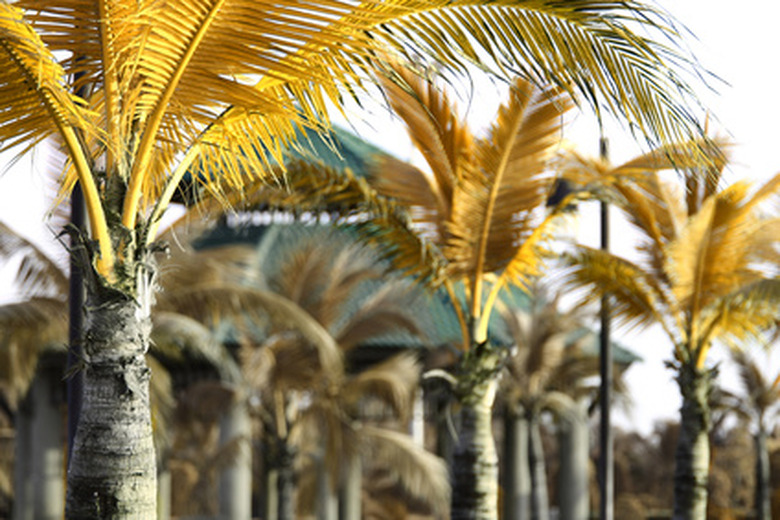The Growth Stages Of A Coconut Palm Tree
Coconut palm trees grow in many subtropical and tropical locations in the world that don't experience freezing temperatures. Coconut palm and their fruits have been a valuable source of food for humans and animals alike for thousands of years. At the center of the seed is a hard nut that contains a liquid or milk providing the necessary moisture and nutrients the seed needs to germinate.
Coconut Seed
The coconut seed is a nut surrounded by a fibrous growth with a smooth outer layer. The fibrous growth covering, or husk, allows the seed to remain buoyant and float over miles of sea to a new location. Most of the time, however, the coconut seed sprouts at the base of the coconut tree where it originated.
Newly Sprouted Plant
After the coconut has laid partially buried in sand or soil, it begins to germinate or sprout. The first leaves come from the three soft holes that are located at the end of the nut. They are called entire leaves because they do not have the frond-like appearance of a typical palm leaf. The new plant continues to absorb the moisture and nutrients located in the brown nut during its first year of life.
- Coconut palm trees grow in many subtropical and tropical locations in the world that don't experience freezing temperatures.
- The fibrous growth covering, or husk, allows the seed to remain buoyant and float over miles of sea to a new location.
Juvenile Plant
During the period between sprouting and first flower formation, the juvenile plant grows rapidly and produces the typical pinnate or feathery leaves most often seen on a palm tree.
Coconut Flowers
At about five or six years of age, the coconut palm tree begins to produce clusters of flowers in the area where the leaves come together near the trunk, also known as the axil. New fruits are formed on the flowers, but many fall off before maturing or are eaten by animals. The ones that survive turn into coconuts in about nine months. Each coconut palm tree produces about 50 coconuts per plant. When the seeds are mature, the stems holding the seeds dry, become brittle and break. Then, the seeds are deposited at the base of the mature palm tree.
- During the period between sprouting and first flower formation, the juvenile plant grows rapidly and produces the typical pinnate or feathery leaves most often seen on a palm tree.
- At about five or six years of age, the coconut palm tree begins to produce clusters of flowers in the area where the leaves come together near the trunk, also known as the axil.
